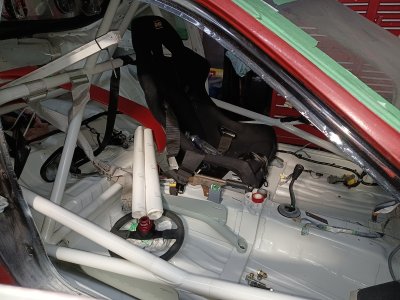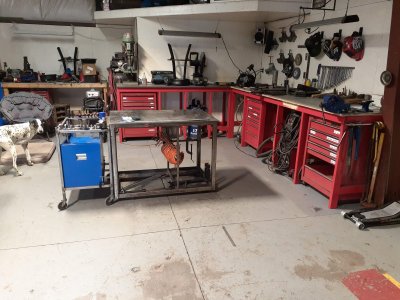Former Member
Guest
Don't worry about gas, this applies where you use either a CO@/Argon Mix (if you already have it) or FLUX Core (or both in wind days).
Watch this video.
Watch this video.


Thanks. I've owned reds as well as blue. I like them both. Nice machines.@CalgaryPT - the "C" at the end of the 180 for the Lincoln welders distinguishes between the retail store welders and the commercial units; the 180C is about triple the price IIRC and features machined aluminum drive components rather than the plastic ones. I had a sponsorship deal with Lincoln so I've had a variety of welding machines through them yet I still own/use my OG 220v Mig 180 from ~2006 the most. Just an FYI because you mentioned you weren't sure what the "C" was for.
Do the progressive lenses work similar to having a cheater/magnifying lens inside of your mask? @Tecnico
My helmet is about 10 years old (wow, already!) so it doesn't have the latest & greatest so I can't comment on true color. That said it does what I need it to do.Is the ArcOne helmet one of the new generation auto-darkening helmets w/ the "true color" lens when the EDF cartridge activates (when the shield auto darkens)?
I was looking at one of these (https://www.aliexpress.com/item/4001332182131.html?spm=a2g0o.cart.0.0.37c73c008jrfYJ&mp=1) to steal the EDF cartridge from to upgrade my Viking 3350.
I paid less than $100 for my hood at crappy tire, when it was on sale. For the amount I do, it’s great@Tecnico - you have a good point about buying North American brick and mortar... from experience, those brick and mortars get their stuff in sea cans so I was trying to be sneaky and save some money - I have a bunch of helmets and was hoping to upgrade to the new (w/in the last year or so) auto-darkening technology w/o paying $594 for an entire replacement helmet (or ~$200 for the cartridge if I can coax a supplier to special order it). The EDF cartridge is the auto-darkening component, everything else is just different forms of plastic (+ the headband).
Welding is a challenge for me for many reasons. Eyesight is just one of them. But I will learn to weld. It will just take me a while to do it.
What changed my welding game was:
A) Metering my machine so I knew what voltage each setting put out.
B) Measuring the actual wire put out at various places on the wire feed dial.
C) Getting a decent auto dark helmet.
D) Attaching an LED headlamp to the chin of the helmet.
I'm finding it more difficult to see @Susquatch and I'm not trying to work through near as many obstacles... again, my offer stands for welding experience in my shop... I've taught practical skills to students with difficulties in the past (I'm laughing w/ you, not at you) and try really hard to deliver ideas in different ways to gain understanding... I've instructed welding before... just don't take ANY machining advice from me, and I mean NONE - did you see how I had the center doo-hickey setup?
I just used my Fluke multimeter. I have a Millermatic 130 which has a four-position voltage selector. I was spending a fair amount of time on the Welding Tips and Tricks forum trying to absorb as much info as possible. When asking for help they want to know exact numbers for voltage and wire speed in inches per minute.Please tell me more about your metering. I'd like to do that but have not been able to find enough reliable info on what the wave form is supposed to look like. I'm not anxious to destroy a good multimeter or an oscilloscope. So I'd like an idea of what it looks like first.
